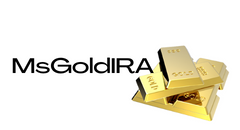
Ethereum's Market Capitalization and Trade Volume
As of Dec. 15, 2023, ethereum's price exhibits intricate dynamics, standing at $2,259. Oscillators and moving averages paint a mixed picture, while the 4-hour and daily charts reveal patterns of consolidation and a short-term downtrend.
Ethereum's (ETH) market capitalization stands at $271 billion, accompanied by a 24-hour trade volume of around $17.54 billion. These figures underscore Ethereum's substantial presence in the crypto economy compared to other tokens. However, the fluctuating trade volumes and price range ($2,254 to $2,331) within the last 24 hours point to a market grappling with varied investor sentiments and external factors.
Price Analysis and Investor Sentiments
At the time of writing, Ethereum's relative strength index (RSI) at 42.9, Stochastic at 17.9, and the commodity channel index (CCI) at -108.5 all hover in the neutral to bearish territory. This alignment suggests a lack of strong momentum in either direction for ethereum's price, indicating a period of uncertainty or consolidation within the market.
A detailed look at moving averages reveals a predominantly bearish sentiment. The exponential moving averages (EMAs) and simple moving averages (SMAs) for 10, 20, 30, 50, and 100 days primarily signal a negative tone, except for the 100-day SMA and 200-day EMA which indicate some positivity. This mixed outlook hints at a complex market environment, where short-term bearish trends are contrasted with potential long-term stability or growth.
Daily and 4-Hour Price Charts
The daily ETH/USD chart showcases a recent high at approximately $2,407 and a significant low at around $1,929. The alternating lows and highs reflect market indecision or consolidation. The latest drop on the daily chart points to bearish sentiment, but without further context, it's challenging to ascertain if this marks a reversal or a mere pullback.
The 4-hour ETH/USD chart offers a more granular view, with a recent high near $2,335 and a low at about $2,146. The prevalence of volatility and lower highs suggest a short-term downtrend. However, the inconsistent volume patterns provide no clear indication of a trend reversal or continuation, adding to the complexity of the current market scenario.
Bullish Outlook
Despite the current market's complex and somewhat uncertain environment, several indicators provide a cautiously optimistic outlook for ethereum. The notable bullish signals from the 100-day SMA and 200-day EMA suggest underlying strength and potential for long-term growth. Additionally, ethereum's substantial market capitalization and robust trade volumes indicate continued investor interest and market confidence.
Bearish Outlook
On the flip side, the predominance of negative signals across most short-term moving averages, combined with the RSI, Stochastic, and CCI's neutral to bearish positions, paints a more cautious picture for ethereum's immediate future. The recent trend of lower highs and the dominance of red candles in the 4-hour ETH/USD chart suggest a continuing downtrend. This bearish sentiment is further compounded by the market's current volatility and indecision, as evidenced by the fluctuating trade volumes and price ranges.
Register your email here to get weekly price analysis updates sent to your inbox.
What do you think about ether's market action on Friday morning? Share your thoughts and opinions about this subject in the comments section below.
Frequently Asked Questions
How much money should my Roth IRA be funded?
Roth IRAs allow you to deposit your money tax-free. These accounts are not allowed to be withdrawn before the age of 59 1/2. However, if your goal is to withdraw funds before that time, there are certain rules you must observe. You cannot touch your principal (the amount you originally deposited). This means that regardless of how much you contribute to an account, you cannot take out any more than you initially contributed. If you decide to withdraw more money than what you contributed initially, you will need to pay taxes.
You cannot withhold your earnings from income taxes. When you withdraw, you will have to pay income tax. Let's suppose that you contribute $5,000 annually to your Roth IRA. Let's say you earn $10,000 each year after contributing. This would mean that you would have to pay $3,500 in federal income tax. That leaves you with only $6,500 left. Because you can only withdraw what you have initially contributed, this is all you can take out.
If you took $4,000 from your earnings, you would still owe taxes for the $1,500 remaining. On top of that, you'd lose half of the earnings you had taken out because they would be taxed again at 50% (half of 40%). So, even though you ended up with $7,000 in your Roth IRA, you only got back $4,000.
There are two types if Roth IRAs, Roth and Traditional. Traditional IRAs allow you to deduct pretax contributions from your taxable income. Your traditional IRA can be used to withdraw your balance and interest when you are retired. You can withdraw as much as you want from a traditional IRA.
Roth IRAs do not allow you to deduct your contributions. Once you are retired, however, you may withdraw all of your contributions plus accrued interest. Unlike a traditional IRA, there is no minimum withdrawal requirement. You don't need to wait until your 70 1/2 year old age before you can withdraw your contribution.
What Precious Metals Can You Invest in for Retirement?
It is gold and silver that are the best precious metal investment. They are both easy to trade and have been around for years. Consider adding them to the list if you're looking to diversify and expand your portfolio.
Gold: One of the oldest forms of currency, gold, is one of mankind's most valuable. It is very stable and secure. This makes it a good option to preserve wealth in uncertain times.
Silver: Silver has been a favorite among investors for years. This is a great choice for people who want to avoid volatility. Unlike gold, silver tends to go up instead of down.
Platinium: Another form of precious metal is platinum, which is becoming more popular. Like gold and silver, it's very durable and resistant to corrosion. It's also more expensive than the other two.
Rhodium: Rhodium can be used in catalytic convertors. It is also used in jewelry-making. And, it's relatively cheap compared to other types of precious metals.
Palladium: Palladium has a similarity to platinum but is more rare. It's also much more affordable. Investors looking to add precious and rare metals to their portfolios love it for these reasons.
Can I have physical gold in my IRA
Gold is money, not just paper currency or coinage. Gold is an asset people have used for thousands years as a place to store value and protect their wealth from economic uncertainty and inflation. Investors use gold today as part of their diversified portfolio, because it tends to perform better in times of financial turmoil.
Today, Americans prefer precious metals like silver and gold to stocks and bonds. While owning gold doesn't guarantee you'll make money investing in gold, there are several reasons why it may make sense to consider adding gold to your retirement portfolio.
Another reason is the fact that gold historically has performed better than other assets in times of financial panic. The S&P 500 declined 21 percent during the same period. Gold prices increased nearly 100 per cent between August 2011 – early 2013. During turbulent market conditions gold was one of few assets that outperformed stock prices.
One of the best things about investing in gold is its virtually zero counterparty risk. Your stock portfolio can fall, but you will still own your shares. However, if you have gold, your value will rise even if the company that you invested in defaults on its loans.
Finally, gold is liquid. This means that you can sell gold anytime, regardless of whether or not another buyer is available. You can buy gold in small amounts because it is so liquid. This allows you to take advantage of short-term fluctuations in the gold market.
What is a gold IRA account?
The Gold Ira Accounts are tax-free investment options for those who want to make investments in precious metals.
Physical gold bullion coin can be purchased at any time. You don’t have to wait to begin investing in gold.
You can keep gold in an IRA forever. Your gold holdings won't be subject to taxes when you pass away.
Your gold is passed to your heirs without capital gains tax. Because your gold doesn't belong to the estate, it's not necessary to include it on your final estate plan.
First, an individual retirement account will be set up to allow you to open a golden IRA. Once you've done so, you'll be given an IRA custodian. This company acts in the role of a middleman between your IRS agent and you.
Your gold IRA Custodian will manage the paperwork and submit all necessary forms to IRS. This includes filing annual returns.
After you have created your gold IRA, the only thing you need to do is purchase gold bullion. Minimum deposit required is $1,000 The minimum deposit is $1,000. However, you will receive a higher percentage of interest if your deposit is greater.
Taxes will apply to gold that you take out of an IRA. You will be liable for income taxes and penalties if you take the entire amount.
Even if your contribution is small, you might not have to pay any taxes. However, there are exceptions. If you take out 30% of your total IRA assets or more, you will owe federal income taxes and a 20 percent penalty.
It is best to not take out more than 50% annually of your total IRA assets. Otherwise, you'll face steep financial consequences.
What are some of the advantages and disadvantages to a gold IRA
An Individual Retirement Account (IRA), unlike regular savings accounts, doesn't require you to pay tax on interest earned. This makes an IRA great for people who want to save money but don't want to pay tax on the interest they earn. However, there are disadvantages to this type investment.
You could lose all of your accumulated money if you take out too much from your IRA. You may also be prohibited by the IRS from making withdrawals from an IRA after you turn 59 1/2. If you do withdraw funds from your IRA you will most likely be required to pay a penalty.
A disadvantage to managing your IRA is the fact that fees must be paid. Many banks charge between 0.5%-2.0% per year. Other providers charge monthly management fees ranging from $10 to $50.
If you prefer to keep your money outside a bank, you'll need to purchase insurance. Most insurers require you to own a minimum amount of gold before making a claim. You might be required to buy insurance that covers losses up to $500,000.
If you are considering a Gold IRA, you need to first decide how much of it you would like to use. Some providers limit how many ounces you can keep. Others let you pick your weight.
It is also up to you to decide whether you want to purchase physical gold or futures. Physical gold is more costly than gold futures. Futures contracts, however, allow for greater flexibility in buying gold. They let you set up a contract that has a specific expiration.
You will also have to decide which type of insurance coverage is best for you. The standard policy doesn't include theft protection or loss due to fire, flood, or earthquake. It does include coverage for damage due to natural disasters. You may consider adding additional coverage if you live in an area at high risk.
Apart from insurance, you should consider the costs of storing your precious metals. Insurance won't cover storage costs. In addition, most banks charge around $25-$40 per month for safekeeping.
A qualified custodian is required to help you open a Gold IRA. A custodian maintains track of all your investments and ensures you are in compliance with federal regulations. Custodians don't have the right to sell assets. They must instead keep them for as long as you ask.
Once you've chosen the best type of IRA for you, you need to fill in paperwork describing your goals. You must include information about what investments you would like to make (e.g. stocks, bonds and mutual funds). Your monthly investment goal should be stated.
You will need to fill out the forms and send them to your chosen provider together with a check for small deposits. The company will then review your application and mail you a letter of confirmation.
Consider consulting a financial advisor when opening a golden IRA. Financial planners are experts in investing and will help you decide which type of IRA works best for your situation. They can help reduce your expenses by helping you find cheaper alternatives to buying insurance.
Statistics
- This is a 15% margin that has shown no stable direction of growth but fluctuates seemingly at random. (smartasset.com)
- Contribution limits$6,000 (49 and under) $7,000 (50 and up)$6,000 (49 and under) $7,000 (50 and up)$58,000 or 25% of your annual compensation (whichever is smaller) (lendedu.com)
- (Basically, if your GDP grows by 2%, you need miners to dig 2% more gold out of the ground every year to keep prices steady.) (smartasset.com)
- If you accidentally make an improper transaction, the IRS will disallow it and count it as a withdrawal, so you would owe income tax on the item's value and, if you are younger than 59 ½, an additional 10% early withdrawal penalty. (forbes.com)
- You can only purchase gold bars at least 99.5% purity. (forbes.com)












